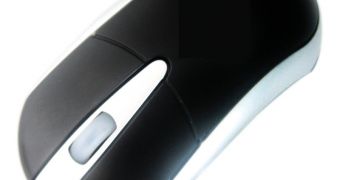According to some IT industry analysts, the well known and widely used computer mouse may become an endangered species in the not so far future. The tendency in the industry is to offer users devices that will allow them to move the cursor on a screen through finger or hand gestures on touch screens and multi-touch trackpads rather than using the traditional computer mouse.
According to Steve Prentice, vice president and fellow at Gartner, a market-research firm based in Stamford, Conn., it won't be long until we see users tilting or shaking the phones or other handheld devices to manipulate them. Currently, Apple's iPhone, Nokia and other smartphones are going through similar transformations with touch screens, and the move is expected to accelerate over the next few years.
iPhones or iPod touches allow users to scroll through album covers simply by flicking a finger across the screen, or control actions in a game by tilting and turning the device. According to Prentice, based in Egham, England, within five years’ time, users will stop using mice with their laptops. Moreover, this will also lead to a diminished usage of mice on office desktop computers. It seems that trackpads are considered to offer more versatility.
“The demise will be hastened by the move toward 3D environments, which encourage a more complex range of movements to move around, and by the growth of multimedia applications and manipulation, which encourage a more natural user interface,” he said.
Hewlett-Packard already announced a TouchSmart personal computer which features a touch-screen monitor. Apple unveiled new laptops that include trackpads supporting gestures with two, three or four fingers. Moreover, the upcoming Microsoft Windows 7 also features multi-touch support.
According to Logitech International, the Swiss maker of mice and other peripherals, the process will be a much slower one. According to the company, touch screens will keep on developing, yet Erik Charlton, director of product marketing for Logitech retail pointing devices, said “I don't see a world where it would override the effectiveness of the mouse and keyboard”.
The first computer mouse surfaced in 1968, at what was known at the time the Stanford Research Institute.
The Microsoft Technology Center in Manhattan displays a Surface table which allows users to take a glimpse at the future. The Surface computer was introduced for commercial use in July. It features a 30-inch screen which allows users to tap, drag, spin and zoom in and out with their fingers or an object such as a paint brush.

 14 DAY TRIAL //
14 DAY TRIAL //